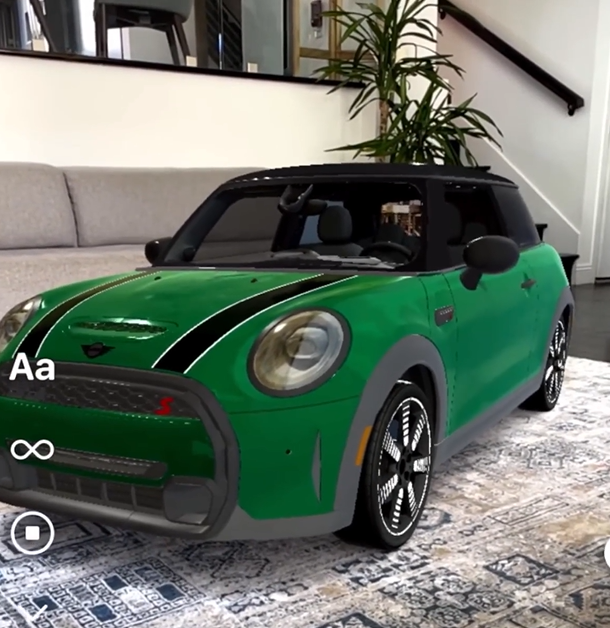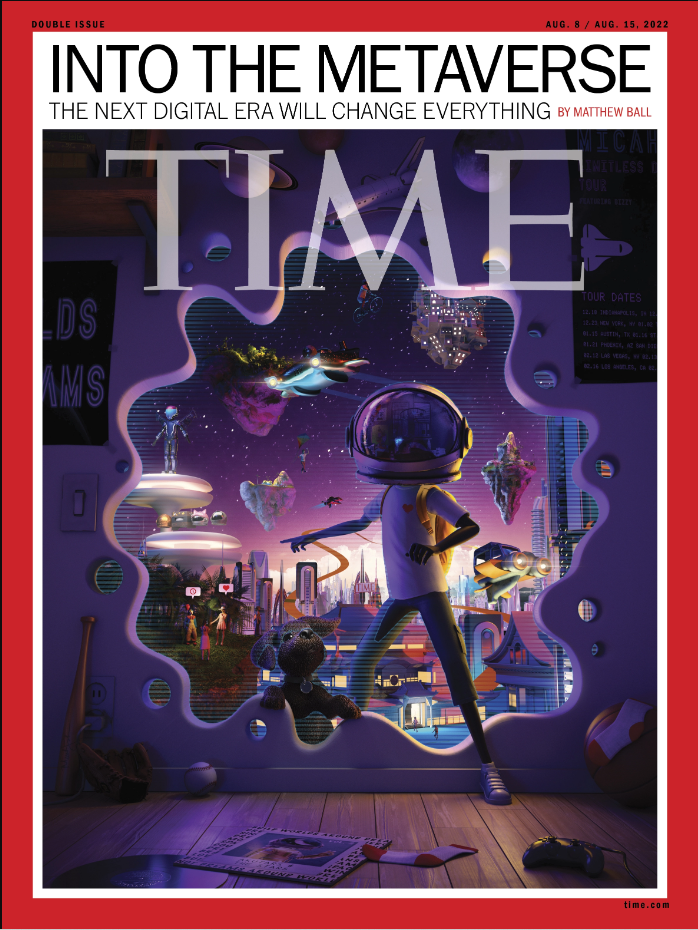'Metaverse Killed the Radio Star,' Cuervo's all in and 'Time' magazine's tribute to the new tech
'Metaverse Killed the Radio Star,' Jose Cuervo's virtual party and Time magazine is all in on the technology
Welcome to the Metaverse #10

With respect to the Buggles, 'Metaverse Killed the Radio Star'
Old-person reference aside in the headline above, MTV was once the place to go for culturally relevant music news.
Of course, this was a looong time before Snooki and Pauly D rendered the "M" in MTV irrelevant.
But the 41-year-old music (ish) channel this month revealed a new category in its annual Video Music Awards ceremony: "Best Metaverse Performance."
I don't see any scenario where Ariana Grande doesn't win this one.
Also, Travis Scott deserves some sort of honorary award for paving the way here in 2020.
Anyway, Grande, BLACKPINK, Justin Bieber, Charli XCX and Twenty One Pilots are the inaugural group of nominees for this new category.
The article gives credit to the pandemic for making virtual concerts more popular.
While there is no way to disprove that, I would argue that the growth of Fortnite and so many other virtual world games made it kind of inevitable.
Still, this is a great example of even more ways the Metaverse will affect our every day.
The more of these that happen, the more Metaverse curiosity slips into the mainstream.
HERE IS THE
ARTICLE on the nominees.

Let's meet in the Metaverse and have some Jose Cuervo (virtual) shots ... or learn about agave
Are you ready to visit the first distillery in the Metaverse?
Well, the company behind the Jose Cuervo brand of tequilas appears to be ready to put that into the universe.
A tweet from a trademark attorney revealed that Cuervo has filed applications to trademark multimedia based on NFTs, digital assets, virtual bars and restaurants, along with, you guessed it, virtual distilleries.
The company announced this effort months ago and finally debuted its virtual meeting space on the Decentraland virtual world.
In perhaps a telegraphing of future offerings by other companies, Cuervo also offers a little bit of education in the virtual world, with facts and data about the agave plant being offered.
For more information and to check out the article, CLICK HERE.
OUR TAKE
We haven't been shy here about the importance of seeing players in various industries jumping into the Metaverse in their own way.
I imagine that this game-based play by Jose Cuervo will be a strategy many companies take.
Clearly, you cannot take shots in the Metaverse (at least not until you are in a virtual bar and there are gamified incentives for getting your avatar a little buzzed).
But perhaps winners of the aforementioned "drink mix challenges" would be in line for real-world rewards.
Yes, on its surface, it sounds gimmicky.
However, what's big to recall is that this is a new world we are seeing forged.
The potential for this to set an example for other industries is the main reason we are featuring it here.

Facebook, er, Meta, data shows augmented reality boosts consumer confidence in brands - by a lot
According to Facebook, er, Meta, campaigns that combine augmented reality with the average campaign drove more awareness and nearly tripled an advertising campaign's effectiveness.
The social media company has been working deeper with augmented reality and immersive technologies.
In what it called a "groundbreaking AR ad study," Meta showed increased effectiveness and decreased cost to ad campaigns using augmented reality.
The post highlighted four companies and how they used AR to enhance their advertising.
A Polish foundation showed off "Rak 'n' Roll," which was a donation-based campaign to raise money for cancer research that invited musicians to create augmented reality-enhanced music videos.
A mobile game publisher in South Korea created a game that mixed the real world and AR to allow players to hunt down a monster.
Avon created a filter to gamify its brand messaging and lead generation, essentially offering rewards for those who played the game.
The car company Mini, meanwhile, developed an AR effect so shoppers could preview a to-scale version of the car they wanted to buy in any environment.
"More people are doing their car research online than ever before," says Rahul Mahtani, communications manager at Mini. "So, while there are many different ways brands can tap into AR, we wanted to focus on utility for those in the learning phase."

OUR TAKE
Beyond this week's debut of "Are We There Yet," we see that Facebook also recently laid out this data.
It's a clear indicator that the company really doesn't doubt its immersion into the Metaverse and augmented reality isn't a short play.
Despite the fact that it has taken its lumps, it really believes in the potential for the Metaverse to be an income driver.
It's hard to disagree.
As someone who has followed tech closely for nearly a decade, it's been great to watch and analyze how the Metaverse has been introduced, criticized and then embraced by tech companies.
We shared here months ago a video of Katie Couric and Bryant Gumbel amusingly doubting whether the Internet would become a thing.
Because they were wrong, we are now at a moment where Web 3.0 is going to soon become a thing.

Iconic Time magazine cover: The Metaverse "will change everything" Walmart's potential A "Time" article, called "The Metaverse Will Reshape Our Lives. Let's Make Sure It's for the Better," shares data that shows interest and activity in this new virtual world has continued to grow.
The SEC reported that in the first six months of this year, regulatory filings included the word "Metaverse" 1,100 times.
That is more than four times as much as in 2021.
When you look at activity from some of the biggest tech companies in the world, you can see they are all preparing for the Metaverse.
From reorganizing, hiring officers to oversee efforts and preparing huge product launches in the Metaverse, you can see that big business will lead the way here.
Remember that in January, Microsoft acquired video game giant Activision Blizzard and specifically said that this acquisition would "provide building blocks for the Metaverse."
Businesses have made $120 billion in Metaverse-related investments this year already.
This really is a deep dive into how the Metaverse will affect many industries that we are all involved in already.
Check out the DEEP DIVE HERE.
WHY IT MATTERS

Yes, print media doesn't have the influence it once had, as digital news sites have become the dominant force in the industry.
However, it's a big deal that one of the most iconic magazines in publishing history devoted very valuable real estate - that is, the front page - to telling the story of how next-generation technology is emerging.
Not only that, however.
Let's be clear: this is a declarative statement of how the Metaverse will affect society and culture.
"The next digital era will change everything."
No wiggle room there, is there?
We hope you like what you see. We bet your friends would, too!
Check out our newsletter at the following link.















